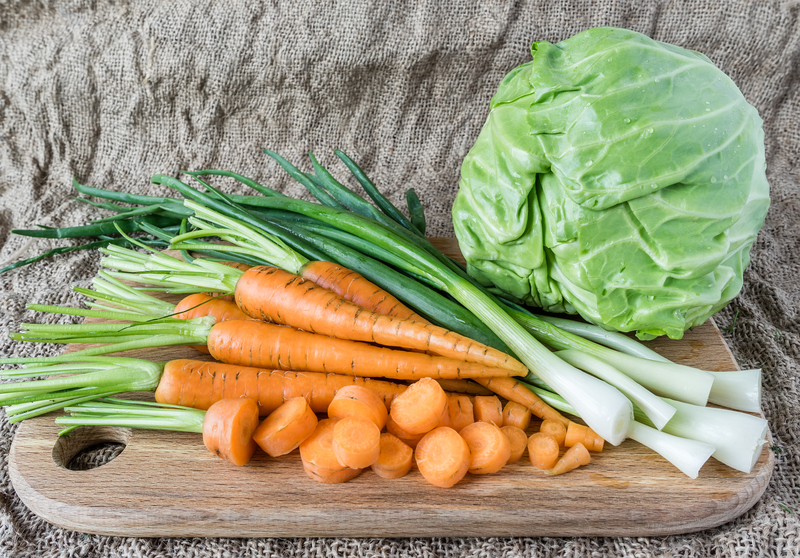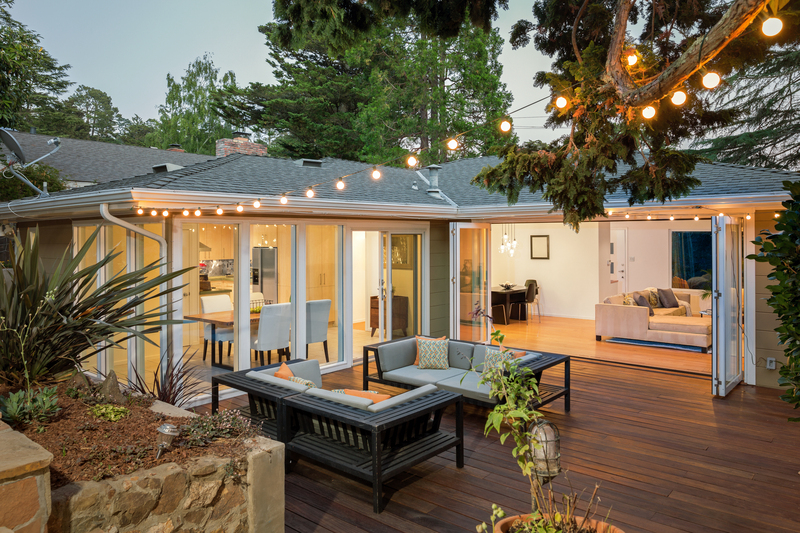Dive into the versatile realm of container gardening
Posted on 21/06/2025
Dive Into the Versatile Realm of Container Gardening
Container gardening is transforming how urban dwellers, suburban homeowners, and even rural gardeners approach growing plants. With limited space, changing climates, and the desire for creativity, container gardens have become a preferred option for many. Whether you want a lush balcony display, a functional herb garden in your kitchen, or vibrant blooms on your patio, this guide will help you navigate the versatile world of container gardening!

What Is Container Gardening?
In simple terms, container gardening means growing plants in pots, boxes, hanging baskets, or other containers rather than in the ground. This flexible gardening method allows for a portable, manageable, and creative approach to cultivating everything from edible herbs to show-stopping ornamentals.
- Adaptable: Perfect for patios, balconies, rooftops, and even indoor spaces.
- Accessible: Ideal for gardeners with mobility issues or limited space.
- Stylish: Enhances aesthetics and offers design flexibility.
- Smart: Makes controlling soil quality, water, and sunlight easier.
The Key Benefits of Container Gardening
1. Ideal for Any Space
Perhaps the biggest advantage of container gardening is its adaptability. If you live in an apartment with only a windowsill or balcony or a house with a tiny patio, a container garden can flourish wherever you desire.
2. Customizable and Creative
Let your imagination run wild! Mix and match flowers, foliage, herbs, and even small vegetables in different combinations. Use colorful pots, quirky planter choices, or hanging baskets for a stunning design statement that reflects your personality.
3. Greater Control Over Growth Conditions
Gardeners can closely monitor soil quality, moisture, and sunlight by growing in containers. This is especially helpful for plants that have specific requirements or in urban environments where soil may be contaminated or of poor quality.
4. Easy Maintenance and Accessibility
Container gardens are easier to reach, water, and maintain. Elevated planters can reduce bending and kneeling, making gardening enjoyable for everyone, regardless of age or physical ability.
5. Deters Pests and Diseases
Many pests and soil-borne diseases can be avoided simply by elevating your plants and managing nutrients and water more precisely.
Types of Container Gardening
The versatile realm of container gardening includes a variety of styles suited to different needs and aesthetic preferences.
- Traditional Pot Gardening: Classic clay, ceramic, or plastic pots filled with your favorite plants.
- Vertical Gardens: Wall-mounted or stacked planters are perfect for small spaces.
- Hanging Baskets: Excellent for trailing flowers, ferns, or strawberries.
- Raised Planters: Convenient for mobility and root development.
- Window Boxes: Add charm and greenery to sills, ledges, and fences.
- Recycled or Upcycled Containers: Shoes, barrels, bathtubs, and more can serve as unique homes for plants.
Choosing the Right Containers
The container you choose plays a crucial role in the success of your container garden. Consider these factors for best results:
Size Matters
Bigger containers hold more soil and water, reducing the frequency of watering and providing more root space. Small containers are excellent for herbs and compact annuals, while large planters accommodate vegetables and decorative specimens.
Material Choices
- Terracotta/Clay: Porous and attractive, ideal for Mediterranean plants but dries out quickly.
- Ceramic/Glazed Pots: Stylish and less prone to water loss, but are heavier.
- Plastic or Resin: Lightweight, affordable, and water-retentive--suitable for many uses.
- Metal: Modern and durable, but may heat up and stress plant roots in hot sun.
- Wood: Natural look and good insulation, but can rot over time if not treated.
Drainage Is Critical
Ensure your containers have sufficient drainage holes. Excess water needs to escape to avoid root rot and other diseases.
Selecting the Perfect Plants for Your Container Garden
The world of container gardening is incredibly diverse when it comes to plant choices. Here are some exceptional options:
- Herbs: Basil, parsley, chives, mint, thyme, and cilantro thrive in pots and offer culinary perks.
- Annual Flowers: Petunias, marigolds, impatiens, begonias, and zinnias provide vibrant color.
- Perennials: Hostas, lavender, ornamental grasses, and daylilies create long-lasting displays.
- Vegetables: Tomatoes, peppers, lettuce, spinach, and radishes grow well in containers.
- Fruit: Strawberries, blueberries, and dwarf citrus trees adapt beautifully to pot life.
- Succulents and Cacti: Perfect for dry conditions and unique aesthetics.
- Foliage Plants: Ferns, coleus, and caladiums add texture and greenery.
Thriller, Filler, Spiller Technique
This tried-and-true method ensures an eye-catching container:
- Thriller: Choose a tall, bold plant for the center or back.
- Filler: Add medium-height, mounding plants to fill around the thriller.
- Spiller: Use trailing vines or flowers to cascade over the edge.
Creating the Best Soil Mix for Container Gardens
Soil quality is paramount in container gardening. Regular garden soil often compacts and doesn't drain well in pots. Instead, opt for high-quality, well-draining potting mix that retains moisture but also lets excess water escape.
Recommended Soil Mix for Most Containers
- 2 parts high-quality potting soil
- 1 part compost or organic matter
- 1 part perlite or vermiculite for aeration
Tip: Add slow-release fertilizer for sustained growth.
Planting Your Container Garden: Step-by-Step
- Choose your plants: Select species with similar light, soil, and water requirements.
- Prepare the container: Ensure good drainage. Place a coffee filter or mesh inside to prevent soil escape.
- Fill with soil mix: Leave 2-3 inches at the top unfilled.
- Arrange your plants: Start with the largest, and then build around them. Organize for aesthetics and growth space.
- Backfill and firm soil: Add more soil around plants and gently press down.
- Water thoroughly: Keep the soil evenly moist but not soggy.
- Feed and Mulch: Fertilize and mulch to preserve moisture and block weeds.
Placement and Light Requirements
Different plants have different needs:
- Full Sun: Vegetables, most flowers, and herbs prefer 6+ hours of sunlight.
- Partial Shade: Ferns, impatiens, and hostas thrive with 3-6 hours of morning or filtered sun.
- Full Shade: Select foliage plants or some begonias for spots with minimal sunlight.
Rotate containers periodically for even growth and adjust locations as the seasons change.
Watering and Fertilizing Your Container Garden
Watering Tips
- Check soil moisture daily, especially during hot, dry spells.
- Water deeply until it drains from the bottom. Avoid frequent light watering, which leads to shallow roots.
- Morning is best: Less water is lost to evaporation.
Fertilizing Containers
- Slow-release fertilizers gradually feed your plants over several weeks.
- Liquid fertilizers can be used every 2-4 weeks for a quick boost, especially for fast-growing annuals.
Don't overdo it--over-fertilizing can stress or burn your plants. Organic options are gentle and eco-friendly.
Seasonal Container Gardening Ideas
- Spring: Tulips, daffodils, pansies, lettuce, herbs.
- Summer: Petunias, geraniums, tomatoes, peppers, marigolds.
- Autumn: Mums, asters, ornamental kale, Swiss chard.
- Winter: Evergreen foliage, dwarf conifers, holly, winter pansies.
Tip: Switch out plants for each season and enjoy a year-round display.
Creative Design Tips for Container Gardens
- Play with heights: Use plant stands or tiered shelving for visual interest.
- Use odd numbers: Groups of 3 or 5 pots are more appealing than even numbers.
- Color themes: Go monochromatic for elegance or mix bold colors for excitement.
- Upcycle: Repurpose old teapots, boots, wooden crates for quirky, sustainable containers.
- Add water features or fairy gardens to enhance containers with life and charm.
Troubleshooting Common Container Gardening Challenges
Pest Problems
- Check undersides of leaves for aphids, spider mites, and whiteflies.
- Use neem oil or insecticidal soap if necessary.
- Encourage beneficial insects like ladybugs for natural pest control.
Disease Management
- Ensure good air flow between plants.
- Remove dead or diseased foliage promptly.
- Avoid overhead watering to prevent fungal issues.
Soil and Drainage Issues
- Refresh or completely change potting soil annually.
- Don't let containers sit in saucers full of water.
- Repot root-bound plants or when soil becomes compacted.
Sustainable Practices in Container Gardening
- Choose organic fertilizers and pest controls.
- Use peat-free, renewable potting mixes to protect wetland habitats.
- Harvest rainwater for eco-friendly irrigation.
- Grow native and pollinator-friendly plants to support local ecosystems.
- Upcycle materials for sustainable and unique container choices.

The Future of Container Gardening: Trends and Innovations
Technology and design are reshaping the versatile world of container gardening:
- Self-watering containers and irrigation systems make maintenance easier.
- Vertical gardens, green walls, and hydroponics bring gardening indoors and maximize small spaces.
- Smart sensors can monitor moisture, light, and nutrients, sending alerts to your phone.
- Compact edible gardens are rising in popularity as more families grow their own food at home.
Ready to Dive In? Start Your Container Gardening Journey!
The versatile world of container gardening welcomes everyone, regardless of skill, budget, or space. With its endless customization options and practical advantages, you can create your own plant oasis anywhere. Whether you're growing juicy tomatoes, fragrant herbs, stunning flowers, or lush greenery, container gardening makes it possible. Embrace this blend of art and science, experiment with bold ideas, and turn your home or apartment into a thriving patch of paradise. Why not start your very own container garden today?
Container Gardening: Frequently Asked Questions
- Q: Can I grow vegetables in containers?
A: Absolutely! Many vegetables, including tomatoes, peppers, lettuce, and even carrots, thrive in pots when given the right care. - Q: How often should I water my container garden?
A: It depends on the weather, container size, and plant types. Check soil moisture daily--most container plants require more frequent watering than those in the ground. - Q: Do I need to fertilize container plants?
A: Yes, container plants exhaust nutrients faster. Use slow-release or liquid fertilizer according to the specific plant's needs. - Q: What's the best soil for container gardening?
A: Always use a high-quality potting mix rather than garden soil for optimal drainage and root health. - Q: Can I make my own plant containers?
A: Yes! Get creative--repurpose buckets, crates, boots, or almost anything with adequate drainage.
Explore further and let your creativity shape a unique, thriving container garden--right at your doorstep!

